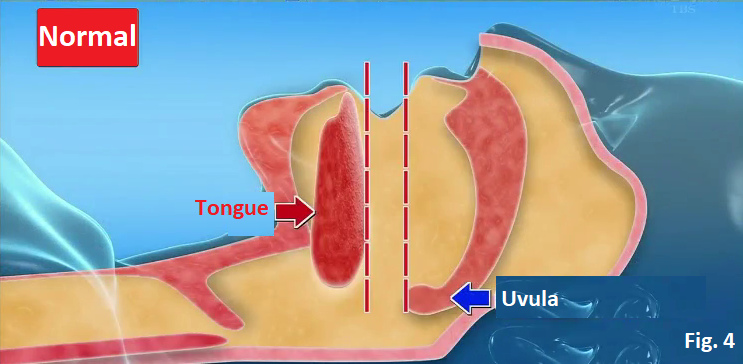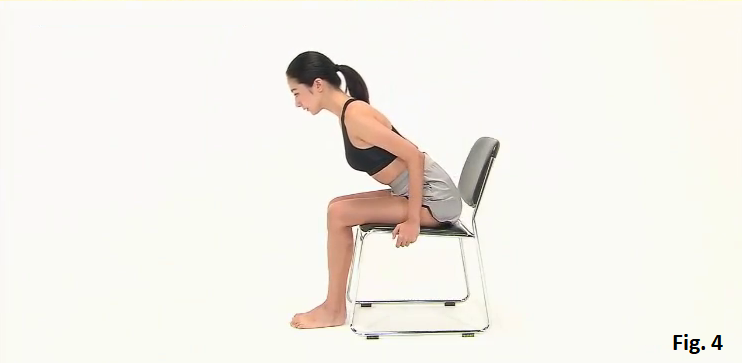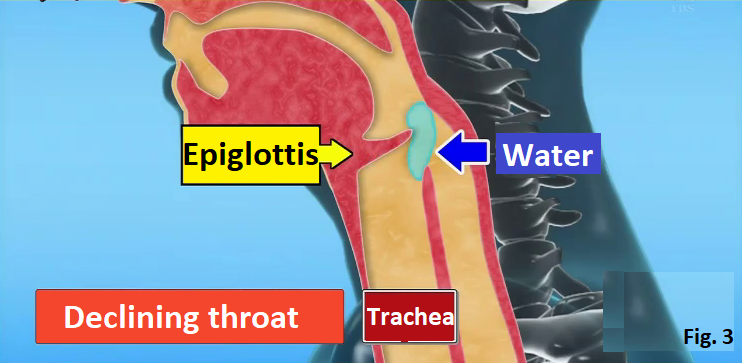|
Conventional exercises to prevent diabetes are aerobic exercise and muscle-building exercise.
Aerobic exercise is the exercise to reduce fat because that makes sugar easier to reduce and is recommended to do 30 minutes for 5 times a week. Muscle-building exercise is to increase muscles because muscles need a lot of sugar as the energy and is recommended to do 45 minutes for 3 times a week. Both exercises are hard to continue. Another exercise to lower blood sugar This exercise reduces sugar and also uses a lot of sugar, and needed to be done 20 minutes for 2 times a week. A 63 years-old man who couldn’t have continued aerobic exercise and whose blood sugar had been 142 mg/dl before starting this exercise started this exercise for 20 minutes, 2 times a week and his blood sugar became 86 mg/dl in 3 months, and his weight also reduced to 73 kg from 80 Kg. A 46 years-old man whose blood sugar had been 330 mg/dl, which had been serious diabetes, started this exercise and 2 months later his blood sugar became 160 mg/dl. In a research, 62 people tried this exercise for 2 months and the average of their HbA1c became 7.5 from 9.9. When checked the blood sugar of the above 46 years-old man for 24 hours for 1 week, it turned out that his blood sugar didn’t rise rapidly after meals, compared to before he had stared this exercise. That means he got the body that blood sugar was difficult to rise. This exercise doesn’t change the quantity of the muscle but the quality of the muscle. 2 types of muscle fibers Slow-twitch fibers (also called red fibers) which are good for endurance and fast-twitch fibers (also called white fibers) which are good for rapid movements (Fig. 1). But there is another muscle that is “peach colored fibers”. This exercise turns white fibers to peach-colored fibers. This exercise increases something red in white fibers, which is mitochondria. Mitochondria burns fat with oxygen to produce energy. White fibers originally consume sugar, so peach-colored fibers have the effects of both consuming sugar and burning fat (Fig. 2). If peach colored fibers increase, the amount of oxygen after this exercise increases, meaning that mitochondria in the muscle increases. How to do the exercise lowering blood sugar If you have high blood pressure or knee problems, consult before starting this exercise. The exercise is Slow Squat. (1) Stand with your feet wider than shoulder-width apart and with your toes outward 30 degrees (Fig. 3). (2) Have your knees face in the same direction of your toes (Fig. 5). (3) Look straight ahead, keep your knees behind your toes and extend your arms in front (Fig. 6). (4) Slowly squat down until your knees make 90 degrees, counting out to 10 (Not to stop breathing), hold the posture for 2 seconds and stand up (Fig. 4). (Keep your back straight and push your butt back (Fig. 7)) (5) Repeat 10 reps and rest for 3 to 4 minutes, repeat 10 reps, rest for 3 to 4 minutes and repeat 10 reps (Fig. 8). Doing this exercise for 3 sets of 10 reps, 2 times a week is effective. For the elderly and people whose legs are weak: (1) Prepare 2 chairs. (2) Sit on the edge of the chair. (3) Put another chair in front of you as a support and stand up holding the backrest (Fig. 9). It is necessary to continue doing this exercise for 3 months.
0 Comments
Sleep apnea
Sleep apnea (obstructive) is a sleep disorder that is diagnosed when stop of breathing of more than 10 seconds is repeated more than 5 times within 1 hour during sleep. The major causes of sleep apnea are said to be aging, overweight and so on. Leaving sleep apnea as it is, the symptoms such as strong sleepiness during daytime or tiredness due to lack of sleep occur and there is a high risk that the various complications like heart failure, high blood pressure or diabetes are caused. But it is difficult to check whether your breathing stops or not during sleep. Actually, if you look at the inside of your mouth, you can check whether you have sleep apnea or not. How to check whether you have sleep apnea or not (1) Prepare a hand mirror and look upward at an angle of 45 degrees. (2) Look at the inside of the mouth with putting your small finger at the corner of the mouth, saying “Ah” (Fig. 1 & 2). Normal: The gap between the uvula and the tongue is wider than the width of the small finger. (Fig. 3 & 4) Sleep apnea: The gap between the uvula and the tongue is narrower than the width of the small finger, or the uvula can’t be seen (Fig. 3 & 5). Apple pectin is a dietary fiber contained in apples and harmonizes the intestinal environment.
At the time of constipation, apple pectin softens the stool and encourages the bowel movement. At the time of diarrhea, apple pectin protects the inside of intestines not to damage. The best method to eat apples to harmonize intestinal environment is… Cutting an apple with the skin into round slices (Fig. 1). Why cutting an apple with the skin into round slices is good? Because apple pectin is rich between the skin and the flesh, it is important to eat an apple including the skin. Cutting into round slices makes it easier to eat the skin and enables to eat near the core of the apple. Other nutrition like polyphenol or vitamin E is rich around the skin, so it is better to eat an apple with the skin. Dangerous Low Back Pain
It is said that many of low back pains are caused by stiffness or scars of the muscles, but there is a dangerous low back pain caused by the compression of the nerve in the low back, which is a herniated (intervertebral) disc. A herniated disc is the condition that the disc between bones in the low back, which called Intervertebral disc, bulges out and stimulates the nerve, causing low back pain or numbness in the leg (Fig. 1). How to check whether your low back pain is caused by a herniated disc or not (1) Stand with your feet shoulder-width apart (Fig. 2). (2) Stand on tiptoe for 10 seconds. If you stagger or your heels touch the ground within 10 seconds, you may have a herniated disc. When the nerve from the back to the leg is disturbed by a herniated disc, the calf doesn’t have strength or feels numb, making difficult to stand on tiptoe stably. Exercise to prevent a herniated disc (1) Sit straight on a chair (Fig. 3). (2) Bend your upper body forward slowly to more than 45 degrees and return to the original state (Fig. 4). (3) Repeat 10 reps. Lycopene contained in a tomato has the effect to lower blood sugar.
When blood sugar in the body goes up, blood sugar is lowered by secreting insulin. Lycopene contained in a tomato has the effect to make insulin work better. The best method to increase lycopene contained in a tomato to lower blood sugar is… Storing a tomato at room temperature. Why storing a tomato at room temperature is good? Because storing a tomato at room temperature accelerates the ripening process which increases lycopene. A tomato comes from South America originally, where the weather is warm so that a tomato doesn’t like the cold. Storing it in a refrigerator doesn’t accelerate the ripening process. When you store a tomato, it is important to face the calyx of the tomato down because the flesh of the calyx side is thicker than the other side so that facing calyx down prevents bruising easily (Fig. 1 & 2). Cooking a tomato increases the absorption of lycopene. Aspiration Pneumonia
People who choke on something to eat have high risk of developing aspiration pneumonia. How does aspiration pneumonia occur? In the case of normal people, the epiglottis (the flap covering the trachea) in the throat closes when eating food so that the food is delivered to the esophagus (Fig. 1). But in the case of people whose function of the throat declines with age, the epiglottis in the throat doesn’t close well so that the food enters the trachea. As a result, bacteria propagate from the food delivered to the lung, causing pneumonia (Fig. 2). It is supposed to be impossible to know whether the function of the throat declines or not without X-ray at the hospital. But by drinking a glass of water, you can check whether the function of your throat declines or not. How to check the decline of your throat Drink up 100 cc (3.38 FL OZ) of water within 10 seconds. If you can’t drink up within 10 seconds or if you choke in the middle of drinking it, there is a high possibility that the function of your throat declines. Since people with the declining throat like the elderly can’t close the epiglottis, they choke and can’t drink water well when they drink it at a gulp (Fig. 3). The elderly tends to drink tea or coffee little by little, so it is difficult to notice that the function of their throat declines. How to strengthen the function of the throat Lift-Up-Jaw exercise: (1) Place the fists of both hands under the jaw (Fig. 4). (2) Push your jaw to your fists and keep pushing each other for 5 seconds (saying “Eeh” while doing this is more effective) (Fig. 5). (3) Repeat (1) and (2) for 10 reps. (4) Do (3) for more than 3 sets a day. Singing a song is also effective. I had been feeling uncomfortable in my right hip joint, but I went out for running and stopped running after I ran 5 miles due to pain in my right hip joint.
The next day I felt pain in the hip joint only after a half mile walk and when I’m sitting or lying down, I felt pain in the inside of my right knee and lower leg, squeezing feeling in my right thigh, ankle and top of my right foot. It is difficult to treat yourself because you can’t reach where the cause of the pain is or where you want to needle, especially when the symptom is on your back side. But since the condition was the same on the following day, I decided to start treating myself. After self-acupuncture treatments of about twice a week for 1 month, there was no pain while sitting or lying down, and less pain when I walked, so I tried to run about 3 miles. While I was running, there was no pain so that I thought my hip joint got better, but the next day I couldn’t walk more than a half mile without pain. Again I started treating myself. I continued self-treatment for 2 weeks, but this time my hip joint didn’t get better at all even though I did the same kind of treatments I had done before. When I started to think that I should visit another acupuncturist, an idea came to my mind. I usually put the thinner side of a round-tip needle on an acupuncture point, but I came up with the idea of putting the thicker side of the round-tip needle on an acupuncture point, flipping the round-tip needle. Then I touched an acupuncture point located on the side of my abdomen called GB26 with the thicker side of the round-tip needle, and moved my right hip joint. When I was touching the point with the thinner side, there was pain by moving the hip joint, but touching the point with the thicker side decreased the pain in the hip joint. After that experience, I continued self-treatment, incorporating this method, and the pain in the hip joint gradually disappeared. 2 weeks later I tried to run again about 3 miles, but the pain in the hip joint didn’t happen. Then I tried 6 miles and 9 miles, but the pain didn’t come back. As I mentioned at the beginning, self-treatment is difficult because what can be done on myself is very limited compared to the treatment for others, but it is a very good chance to find better way to treat a patient because I can try something I usually don’t do on my patients. According to a recent research, if the density of vitamin D in the blood was high, the risk of developing cancer decreased by 20 % and the risk of developing liver cancer decreased by more than 50 %.
Shiitake mushrooms (Fig. 1) are rich in vitamin D, but there is a method to increase vitamin D of raw Shiitake mushrooms. The method to increase vitamin D of raw Shiitake mushrooms is… Leaving raw Shiitake mushrooms in the sun. Shiitake mushrooms contain a substance called Ergosterol which turns into vitamin D by being exposed to UV. Vitamin D of Shiitake mushroom becomes more than tripled by leaving in the sun for 1 hour. Generally raw Shiitake mushroom is grown in the dark place so that it is not left in the sun. It is recommended to leave raw Shiitake mushroom in the sun for about 1 hour before cooking. When you leave Shiitake mushrooms in the sun, it is more effective to face the back of cap of Shiitake mushrooms up to increase vitamin D (Fig. 2). |
IchiroThis Blog is for a memo of my clinical realizations, information about health I have learned recently and update information. Archives
April 2024
Categories
All
|































 RSS Feed
RSS Feed